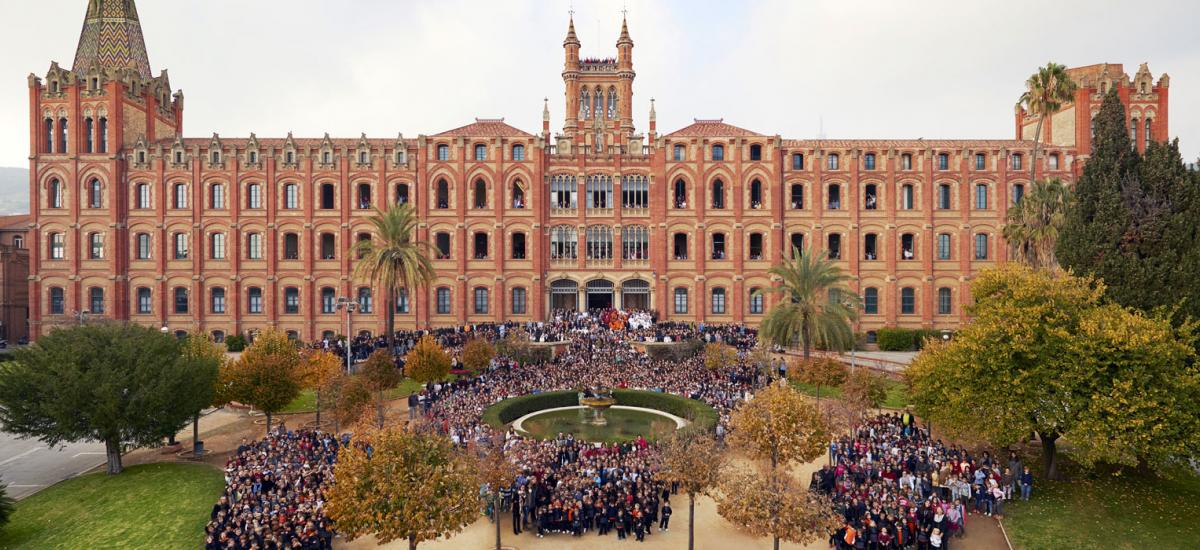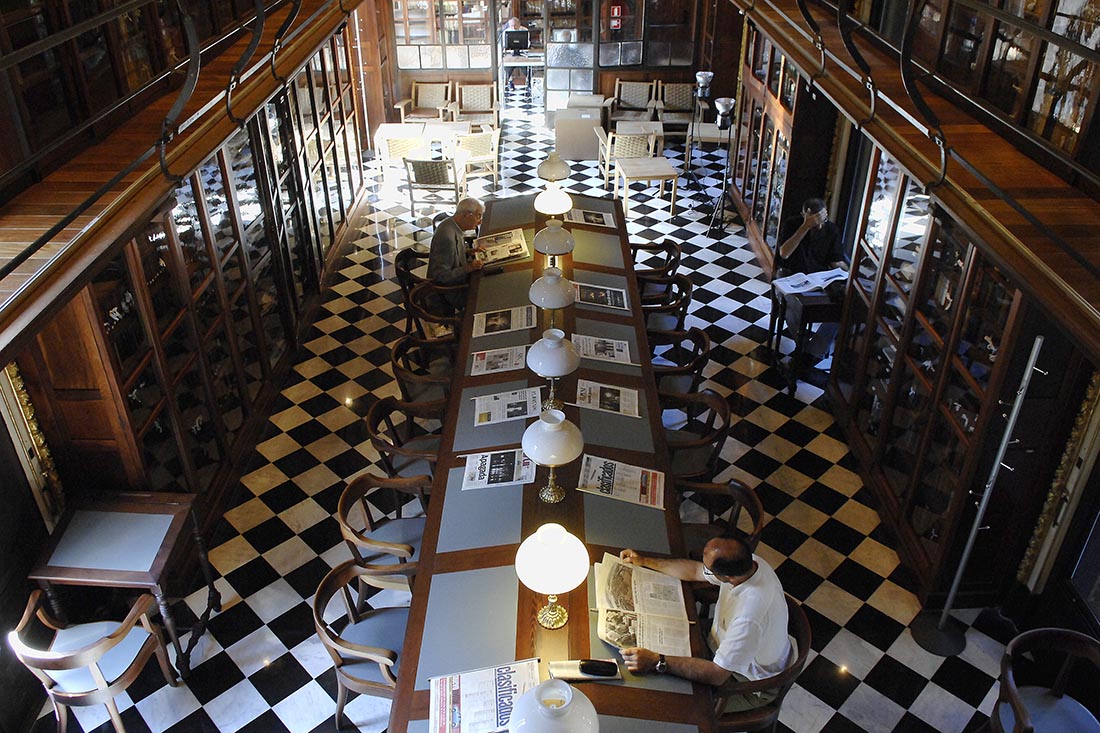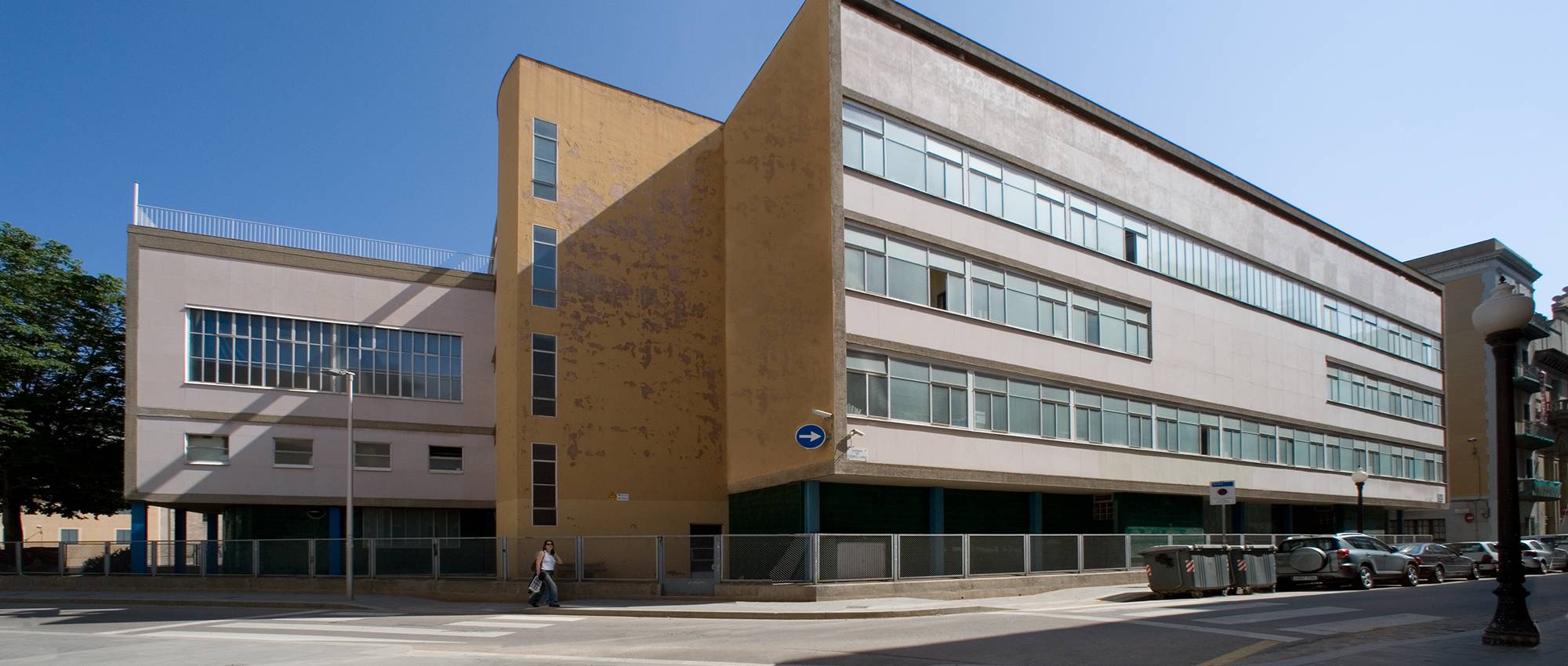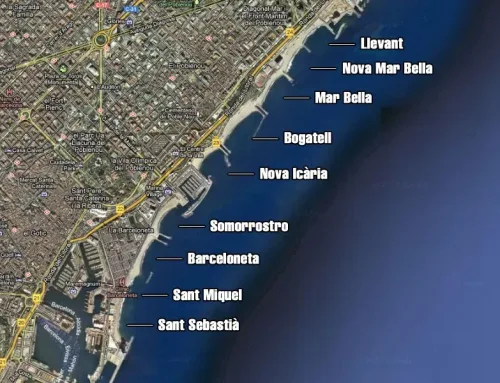Our city, Barcelona, is an amazing architectural showcase, full of history and emotion. The whole city and surroundings draw a 2.000 year-old map of troubles and solutions: the expansion district, the Olympic village, warehouses, docks, … That’s why today, we will not talk about the most popular buildings, as we did already in our blog in articles like The Sagrada Familia or other Gaudí works. We will go a step further and introduce you to an alternative way in a post that may have a second, and a third part if you demand so. Ready to take the walk? Let’s go!
1. SAINT IGNASI SCHOOL
Sant Ignasi - Photo from Pbase.com
Saint Ignacio School in Sarriá, also known as the Jesuits of Sarriá, is located in the upper district of Barcelona, mainly because it takes a whole area of 85.000 square meters. If you visit the school, apart from the outside architecture, don’t miss the chapel, and particularly the auditorium, a reference point in school architecture in the late 19th century. Want to visit it? 32, Carrasco i Formiguera Street.
2. ATENEO (CULTURAL CENTER) OF BARCELONA
Ateneo Barcelonés Library (Palacio Savassona) - Photo from Elandstudio.com
The Ateneo of Barcelona is a cultural center that was founded in Barcelona on 21st May 1860. Nowadays, it counts of over 4.000 members.
It hosts the most relevant private library in Catalonia. It was created in a different way as usual, with donations and acquisitions of books of that time and former ones. We can find books from 1502 until today, five centuries of culture in an amazing library, turning it into the center of Catalan culture. We would like to highlight, of course, this venue and its awesome building, the former Savassona Palace. You cannot miss its most exceptional spaces! Want to visit it? Main entrance is located at 6, Canuda Street.
3. LA CASA ORLANDAI
Casa Orlandai - Photo from Casaorlandai.cat
The local government now runs Casa Orlandai, however, its origins were quite different.
In the 17th century, it used to be a farmhouse near Sarriá village. With the time, Sarriá grew and the farmhouse was integrated among the streets resulting from this growth, between Libertad Street –Jaume Piquet today- and Industria Street – Mare de Deu de Nuria now-. The house has evolved and changed a lot through its history. In 1870, an executive of the chemical company Cros bought it and made it his home. Since 1956, the building has been dedicated to educational purposes, first becoming the Thalita School, a significant point of reference in Catalan education, following the Montessori method and very different form other schools in Barcelona during Franco times. In 1974 it turned into the Orlandai School, an educational project clearly evolving towards open participation in the whole of Barcelona, integrated in the public school system.
In 2003, the school moved to a modern building in Foix Avenue and the house became a neighborhood cultural center, hosting diverse activities open to everyone in Barcelona, such as workshops, conferences, readings, concerts and many others.
Want to visit it? Carrer de Jaume Piquet, 23, 08017 Barcelona.
4. CASA JORNET
Casa Jornet - Photo from Casajornet.com
Casa Jornet lies on the ground floor of Saint Fellipe Neri monastery. It is an over-hundred-year-old carpenter’s workshop established in Barcelona by Miquel Jornet Estivill in 1901 to produce prie-dieu, chapels, desks and other furniture. It also has a great location, on the ground floor of Saint Felip Neri monastery, wall-to-wall with the church named after it.
Casa Jornet has kept the tradition and, generation after generation of the same family, it has continued updating its furniture range. They do not make prie-dieu, or chapels any longer, but offer a broad and varied furniture range following the latest design trends. Ferran, great-grandson of the founder, now leads the company in the 4th line of the dynasty.
Want to visit it? Carrer de la Palla, 10, 08002 Barcelona.
5. THE ANTI-TUBERCULOSIS DISPENSARY AT EL RAVAL
Dispensario Antituberculoso - Photo from Gencat.cat
Josep Lluís Sert (1902-1983)
It is one of the unavoidable representatives of Spanish and universal architecture in the 20th century. His fascinating life took him to Paris in 1926, where he met Le Corbusier, and started to work with him in 1928. Their professional relationship became life-long. After building Casa Bloc, Sert, Torres Clavé and Subirana were asked to design a dispensary for tuberculosis patients in the middle of the Raval district. The outcome was a four-specialized-floor building with metallic structures and prefabricated elements in its construction, as neat in the form as in complying with the most advanced health standards at that time. Although the building was renovated between 1982 and 1992, and despite being an outpatients department currently, it still looks rather poor and pitiful.
Want to visit it? Passatge Sant Bernat, 10.
YAnd after so much walking around…you’ll need a good rest! If you are looking for accommodation in Barcelona, don’t forget that we are your best choice! And, if you book in our website, you’ll get FREE breakfast on your first night. See you soon! s?











